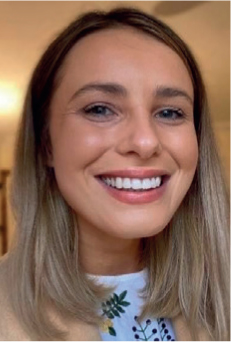
I have worked in healthcare for 10 years and have always enjoyed caring for patients. However, while working as a paramedic, I began to develop a strong interest in preventing disease and illness, as well as healthcare system reform. This redirected me towards public health in October 2019 when I applied for a Public Health Masters to explore this interest. I wanted to gain a better understranding of what hospitals do for patients brought in by the ambulance service. The Royal College of Emergency Medicine allows advanced clinical practitioners from paramedic and nursing backgrounds to access their specialty portfolio, standardising the role of advanced clinical practice in emergency care.
When March 2020 hit, I was still working frontline for the ambulance service. However, unfortunately, I became infected with COVID-19 and developed heart and liver problems, which led to my redeployment. During this time, a Health Protection Practitioner role was advertised for at Public Health England (now UK Health Security Agency (UKHSA)). I was slightly unsure of what it involved but decided to apply for it. To my surprise (and excitement!), I was offered the role.
I now work full-time as a Health Protection Practitioner at the UKHSA and part-time in the control room as a Specialist Hear and Treat Paramedic—and I absolutely love it. There are endless learning and training opportunities and I enjoy the flexibility. My day includes either working in a newly created Covid Response Cell, working on the Acute Response Desk, or carrying out ‘patch’ work. Our team consists of consultants (medical and non-medical), practitioners (mainly nurses), and business support—but I believe I am the only paramedic on the team at present.
Compared to my frontline ambulance work, my work-life balance has vastly improved. I work Monday to Friday, although on-call work is available. We currently work remotely with the option to attend the office in person.
Before the pandemic, the Acute Response Desk dealt with enquiries regarding notifiable diseases. However, due to demand, the Covid Response Cell was created. Our team provides support and advice to vulnerable settings, such as care homes that are experiencing COVID-19 outbreaks, acute respiratory infections, and gastrointestinal outbreaks. Most of our work is completed over the phone, email or teleconference, and we liaise with clinical commissioning groups, local authorities, managers, hospital trusts and laboratories to coordinate an effective response to reduce spread and treat patients. I am normally team leader in the Covid Response Cell, where I provide support to team members regarding complex situations, allocate calls and provide oversight to ensure smooth and efficient service.
On other days, I work on the Acute Response Desk where we deal with other notifiable diseases, such as Legionnaires' disease, tuberculosis, and diphtheria, as well as other emergencies and Chemical, Biological, Radiological and Nuclear (CBRN) incidents. These may include weather warnings (severe flooding), fires and situations like the fuel crisis. Similar to the Covid Response Cell, we receive enquiries via phone or email. However, on the Acute Response Desk, referrals are more often from health professionals or sent to us as laboratory reports. The Acute Response Desk is interesting because of the variety. We are provided with full onboarding training and shadowing shifts, and we must complete a portfolio and be signed off to work on-call. I have learned a lot from reading and interpreting laboratory reports, managing a variety of diseases, and witnessing the work that the Environmental Health Department carries out. Every week, the team holds clinical meetings, whereby training, interesting cases, and learning are shared. Compared with other healthcare roles, hierarchical structures are less obvious, and team members are very much willing to learn and collaborate.
Practitioners are assigned to ‘patches’. On my ‘patch days’, I deal with non-urgent situations and cases. I mainly work on tuberculosis cases when the initial actions have been completed. Often this work involves liaising with hospitals and workplaces, risk-assessing contacts, and drafting and sending inform/advise letters to contacts of cases; other times have involved assisting with absconding cases who are reluctant to receive treatment. I have also attended emergency planning events, alongside ambulance and fire services, local authorities, and other agencies to test emergency plans for potential incidents. This is to ensure robust plans are in place in case an incident does occur.
Public health is a nurturing and stimulating profession with opportunities for learning and progression, particularly for those interested in preventing disease. I would urge health professionals to consider it as innovative and dedicated public health practitioners are currently required to make a difference to population health.

